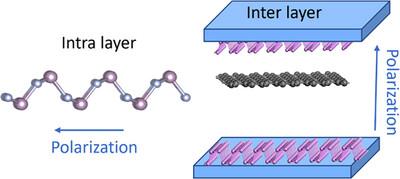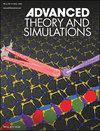Optimizing Ferroelectricity in 2D Materials: Intralayer and Interlayer Engineering for Enhanced Photocatalysis
IF 2.9
4区 工程技术
Q1 MULTIDISCIPLINARY SCIENCES
引用次数: 0
Abstract
Ferroelectric materials exhibit inherent polarization characteristics that render them viable options for improving photocatalytic performance via efficient charge carrier separation. Nonetheless, the majority of two dimensional (2D) materials exhibit an absence of ferroelectric properties owing to their elevated symmetry, which presents obstacles for their utilization in photocatalysis. This study presents two novel strategies for inducing ferroelectricity in 2D materials: intralayer polarization, accomplished by substituting phosphorus atoms in black phosphorus (BP) with elements like nitrogen (N), arsenic (As), or antimony (Sb); and interlayer polarization, realized through a controlled heterostructure design. Density functional theory (DFT) simulations indicate that these tailored materials demonstrate markedly diminished overpotentials for the oxygen evolution reaction (OER) and carbon dioxide reduction reaction (CO2RR), with values as low as 1.04 and 1.12 eV, respectively. The materials exhibit competitive Gibbs free energy profiles for the hydrogen evolution process (HER), highlighting their adaptability. The findings provide a framework for utilizing intralayer and interlayer engineering to improve the ferroelectric characteristics of 2D materials, facilitating advanced applications in photocatalysis and renewable energy conversion.

优化二维材料中的铁电性:增强光催化的层内和层间工程
铁电材料表现出固有的极化特性,这使得它们可以通过有效的载流子分离来改善光催化性能。然而,大多数二维(2D)材料由于其较高的对称性而表现出缺乏铁电性质,这为其在光催化中的应用带来了障碍。本研究提出了在二维材料中诱导铁电性的两种新策略:层内极化,通过用氮(N)、砷(As)或锑(Sb)等元素取代黑磷(BP)中的磷原子来实现;层间极化,通过可控异质结构设计实现。密度泛函理论(DFT)模拟表明,这些材料的析氧反应(OER)和二氧化碳还原反应(CO2RR)的过电位显著降低,分别低至1.04和1.12 eV。材料在析氢过程(HER)中表现出竞争性的吉布斯自由能分布,突出了其适应性。这一发现为利用层内和层间工程来改善二维材料的铁电特性提供了一个框架,促进了在光催化和可再生能源转换方面的先进应用。
本文章由计算机程序翻译,如有差异,请以英文原文为准。
求助全文
约1分钟内获得全文
求助全文
来源期刊

Advanced Theory and Simulations
Multidisciplinary-Multidisciplinary
CiteScore
5.50
自引率
3.00%
发文量
221
期刊介绍:
Advanced Theory and Simulations is an interdisciplinary, international, English-language journal that publishes high-quality scientific results focusing on the development and application of theoretical methods, modeling and simulation approaches in all natural science and medicine areas, including:
materials, chemistry, condensed matter physics
engineering, energy
life science, biology, medicine
atmospheric/environmental science, climate science
planetary science, astronomy, cosmology
method development, numerical methods, statistics
 求助内容:
求助内容: 应助结果提醒方式:
应助结果提醒方式:


